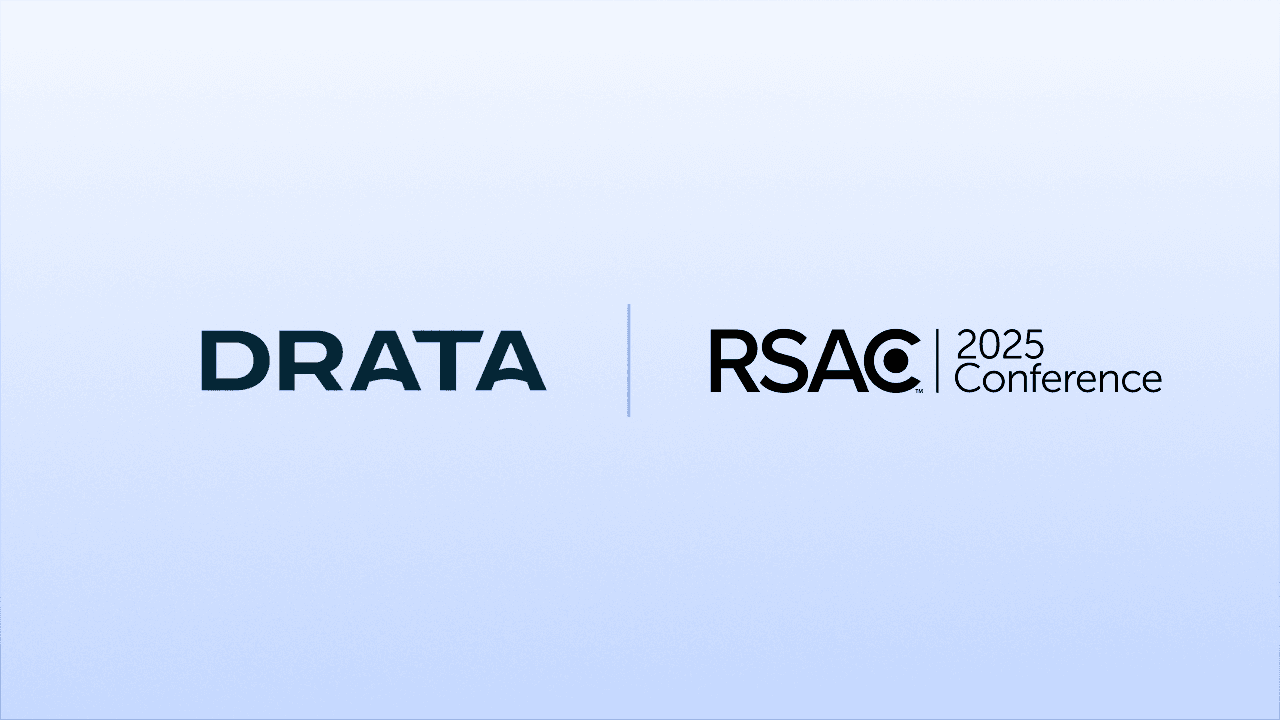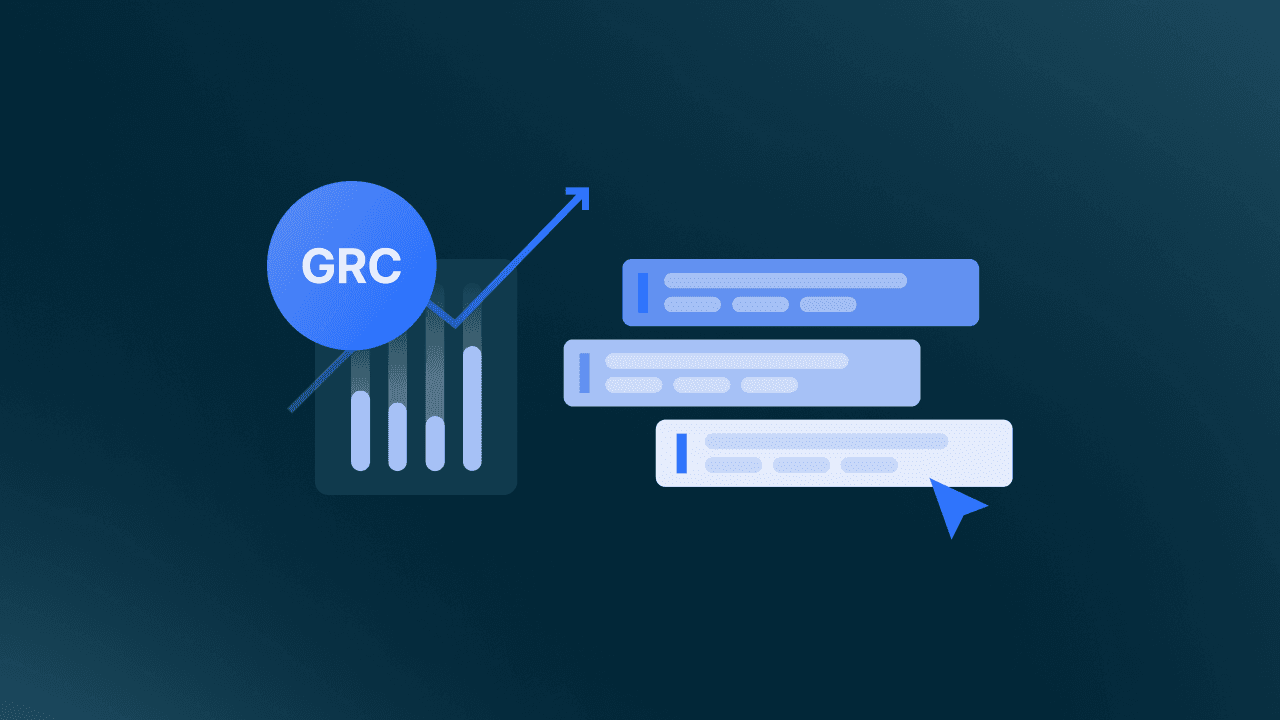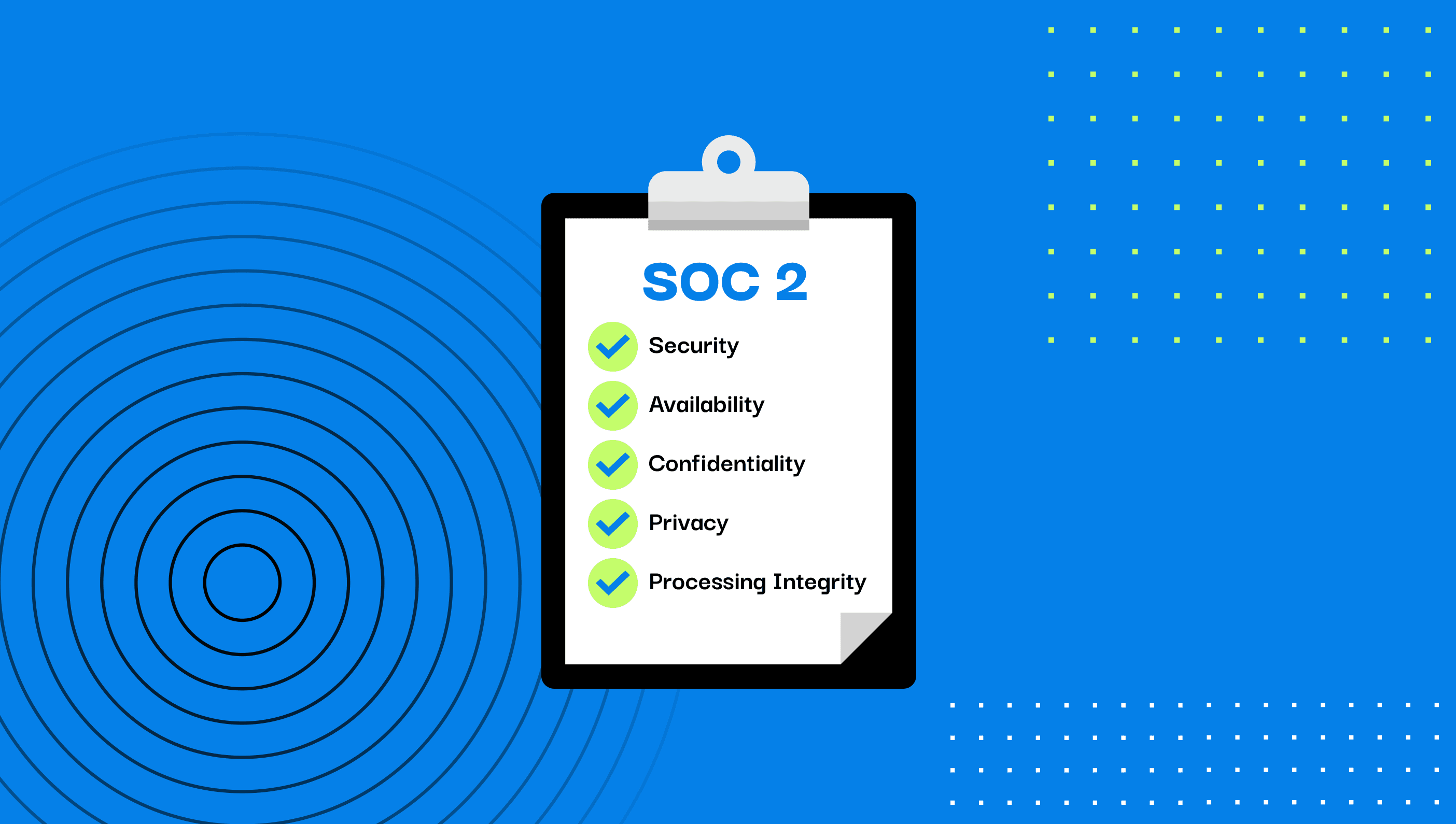Top 10 Best Practices for Leveraging AI and ML in GRC
By integrating these best practices when leveraging AI and ML in GRC, you can improve monitoring, make more informed decisions, and mitigate compliance risk.
Managing compliance with spreadsheets quickly becomes time-consuming and expensive. Equally concerning, these manual processes facilitate human-error risks that can lead to potential compliance violations. Artificial intelligence (AI) and machine learning (ML) offer a way to automate many of these repetitive tasks, so you can reduce compliance costs and improve your team’s effectiveness.
Using a GRC automation solution enables you to move past the point-in-time spreadsheet problems, giving you the real-time monitoring capabilities that improve your compliance postures. From generating quantitative risk scores to reviewing vendor security questionnaires, AI and ML can transform your risk management and compliance efforts.
By integrating these best practices when leveraging AI and ML in GRC, you can improve monitoring, make more informed decisions, and mitigate compliance risk.
What are the Benefits of Employing AI/ML in GRC?
AI analyzes large volumes of data to help you gain insights, make decisions, and automate repetitive, manual tasks. These capabilities allow you to improve your security posture while reducing compliance costs.
Efficiency: Automate routine tasks so you can spend more time on strategic compliance issues.
Real-time monitoring and remediation: Detect anomalies to identify compliance risks so you can remediate them before they become security issues.
Reduction of false positives: Use data to create more accurate alerts, reducing investigation and response times.
Data-driven decision-making: Gain real-time insights for a comprehensive view of the risk landscape to identify potential compliance gaps or areas of improvement and make informed decisions about future staffing and technology investments.
10 Best Practices for Leveraging AI and ML in GRC
While AI and ML are valuable for reducing compliance risks and costs, you need to implement them in a meaningful way.
1. Integrate the Right Tools
AI and ML rely on data to provide insights. Before you can use them, you need to set them up to ingest as much information as possible. To optimize our analytics models, you should integrate as many data sources as possible, including:
Cloud Service Providers, like Amazon Web Services (AWS), Microsoft Azure, Google Cloud Platform (GCP)
Identity Providers (IdP), like Microsoft 365, Google Workspace, and Okta
Human Resources Information Systems (HRIS), like BambooHR, Gusto, and Justworks
Version Control Systems, like GitHub, GitLab, and Bitbucket
Project Management Tools, like Jira, Asana, and ServiceNow
Security Tools, like CrowdStrike, Lacework, and KnowBe4
2. Identify Compliance Frameworks
You need to tell your AI and ML analytics models what to do. As part of setting up your compliance automation, you need to identify the regulations and frameworks that apply to your business, like:
CCPA: California Consumer Privacy Act
CMMC: Cybersecurity Maturity Model Certification
DORA: Digital Operational Resilience Act
GDPR: General Data Protection Regulation
ISO 27001: Information Security Management
ISO 27701: Privacy Information Management
NIST CSF: National Institute of Standards and Technology Cybersecurity Framework
NIST SP 800-171 Rev. 2: Protecting Controlled Unclassified Information
NIST SP 800-53: Security and Privacy Controls for Information Systems
PCI DSS v3.2.1: Payment Card Industry Data Security Standard
PCI DSS v4.0: Updated Payment Card Industry Data Security Standard
SOC 2 2017: System and Organization Controls
Once you identify the frameworks, the AI can help map the controls to them. This streamlines your compliance, especially when you have multiple frameworks or need to add new ones.
3. Identify the Responsible Parties
AI enables you to automate control approvals and readiness assessment by streamlining processes and reducing your reliance on multiple tools. After identifying responsible parties, you can improve efficiency and consistency across the following four stages of control reviews:
Preparing data for approvers: Control owners prepare and manage control information, mappings, and evidence before submitting them for approval.
Notifying approvers: Assigned approvers review the submitted controls, with the authority to approve or request changes.
Tracking change requests: If modifications are necessary, approvers can request updates, and control owners are notified to make the required changes.
Approving controls: Once responsible parties grant approval and set the next review date, the control is considered approved until the subsequent scheduled assessment.
4. Determine your Risk Scoring Method
With their ability to analyze large data sets, AI and ML can help you quantify your security and compliance risk more efficiently. Once you set your controls and frameworks, you can create tailored risk assessments across the following risk scoring capabilities:
Customizable scoring systems: Adjusting default scoring system to any combination for impact and likelihood, so you can map the risk assessment framework to your unique risk appetite and assessment criteria.
Defined impact and likelihood levels: Assigning numerical values to different levels of impact and likelihood for a nuanced understanding of risk severity.
Adjustable thresholds: Customizing default thresholds to add or remove existing ones that reflect your specific risk management policies.
Dynamic visualizations: Offering graphical representations of risk data which adapt based on the configured scoring system for at-a-glance insight into risks within a specified category.
5. Build Policies
Writing policies is time-consuming, and AI can automate different parts of the process. By saving time, you also reduce costs. Some key capabilities to consider include:
Automated policy generation: Analyzing your data, industry standards, and regulatory requirements for a policy’s first draft.
Policy updates: Providing updated templates so you can modify policies in response to framework or regulatory changes.
Policy approval workflows: Tracking required approvals to make sure the right people review them.
Policy compliance monitoring: Identifying potential non-conformance to internal policies that can lead to compliance issues.
6. Identify Vendors and Review Vendor Risk
The more technology vendors you use, the more time consuming your vendor risk management program becomes. To maintain compliance and monitor third-party risk, you need to collect security information from your vendors and review the sensitivity of the data that they access or process. AI can help you streamline these tasks by:
Analyzing the impact that a vendor’s security would have on your organization by assigning an impact level that helps you prioritize your ongoing activities.
Standardizing the evaluation process to reduce human error risk and maintain consistency.
Managing large volumes of assessments so you can scale your business without compromising compliance.
7. Generate Questionnaire Summaries
To reduce the time spent reading through vendor questionnaires, you can use generative AI to give you summaries of them. With AI, you can:
Automate the review of open-ended answers to detect inconsistencies or identify areas that need more investigation.
Highlight the important information and potential risks to understand the vendor’s potential impact more efficiently.
Review more vendors so you can expand your monitoring beyond the highest risk vendors.
8. Respond to Customer Questionnaires
Just like you need questionnaires from your vendors, your customers need them from you. While each vendor may supply their own form, their questions and your answers remain generally the same. AI streamlines this process, allowing you to spend more time focused on strategic tasks. Some considerations when reviewing AI security questionnaire automation include:
Parsing and extracting questions to eliminate manual data entry.
Suggesting responses to each question.
Tailoring the response based on the sources you select, like approved policies, evidence libraries, and subprocessor information.
Allowing you to review and approve the responses.
9. Test Controls
Maintaining your compliance posture typically means testing your controls to ensure that they mitigate risk as intended. AI and ML streamline this process so you can engage in tests more often. Consistently documenting your controls’ effectiveness allows you to show auditors that you maintain compliance and proactively identify areas of improvement. If you have a GRC automation tool that allows you to create custom tests, you can also monitor and gather evidence around security and privacy compliance issues like:
Daily backup statuses: Automate verification of daily backup executions, ensuring data integrity and availability.
User access privilege reviews: Regularly assess user access rights to maintain appropriate access controls and prevent unauthorized activities.
Anti-malware deployment: Ensure that anti-malware solutions are deployed and active across all system components to protect against malicious threats.
Critical failure alerts: Implement alert systems to notify personnel of critical system failures, enabling prompt response and resolution.
10. Manage Tasks
By integrating AI/ML and automated workflows, you can reduce the time spent following up with people about compliance issues. When you can connect your ticketing system to your compliance solution, you can:
Create automatic tickets: Generate tickets based on events, like a control’s readiness status or test results, to track response times.
Customize triggers: Define rules that specify which events trigger ticket creation, so you can tailor your workflows to your unique compliance and operational needs.
How Drata Helps You Leverage AI and ML for GRC
Drata’s GRC platform uses AI and ML that reduces the time spent on manual, error-prone tasks, so you can reduce compliance risk and cost. Our platform provides:
Workflows that streamline control reviews and change management.
Automated risk calculations, mapping, and testing for end-to-end risk management.
AI questionnaire assistance for responding to customer vendor risk management forms to increase deal velocity and reduce manual work.
AI-generated summaries of vendor questionnaire responses to improve third-party risk management programs.





